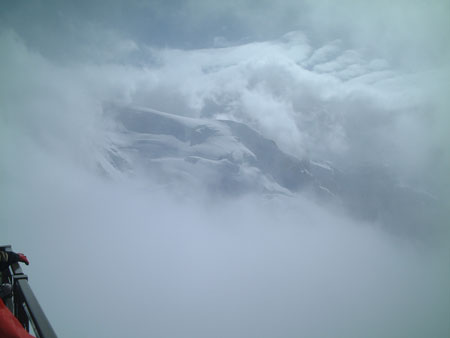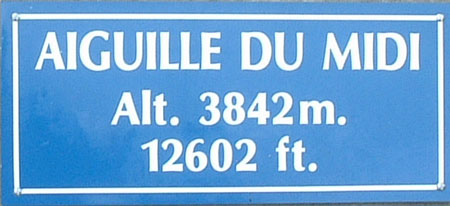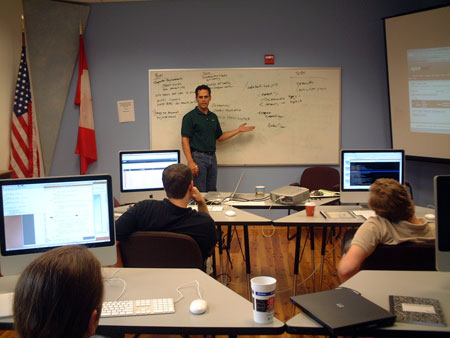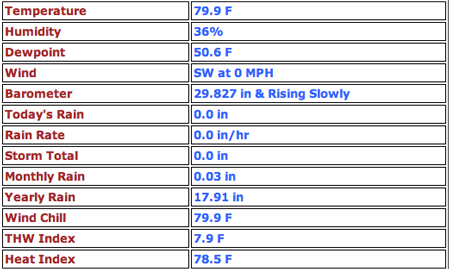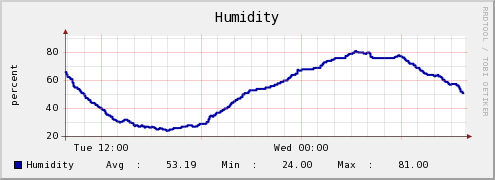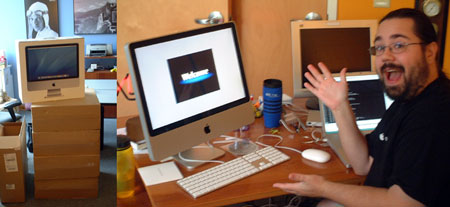Today marks the third anniversary of The OpenNMS Group. Since we started with no venture money and pretty much nothing but a strong will to make OpenNMS the main management platform of choice, this is a nice milestone.
I have told the “OpenNMS” story a number of times, but never on this blog, so perhaps now would be a good time to tell it again.
I didn’t start OpenNMS, nor am I responsible for much of its beauty. Brighter people than me came up with the original architecture and design, and even brighter people than that keep it growing today.
Since I wasn’t there, my knowledge of how OpenNMS got started is pieced together from what various people have told me, so let me apologize in advance if I get things wrong or overlook someone that I should have mentioned.
OpenNMS was started in 1999 by Steve Giles, Luke Rindfuss and Brian Weaver. Steve was one of the founders of Onion Peel Software, which had just been sold to a company called Netplex. Onion Peel provided software and services around the HP OpenView suite of products, and a map management tool called Amerigo was probably their most famous product. Luke and Brian had both worked with Steve at Onion Peel.
Steve was eager to start another company (he’s one of of them “serial entrepreneurs“) and wanted to stay in the network management space. Now at this time companies like Riversoft had raised £83 million in investment, so it was almost impossible to compete in that space without a lot of money. Steve and company saw open source as an opportunity to develop the next-generation of management software without having to raise tons of capital.
They named the company PlatformWorks and started hiring. Ben Reed, one of the current OpenNMS employees, was employee number 5.
PlatformWorks was acquired by Atipa. Atipa was trying to follow in the footsteps of VA Linux, which had a record IPO. Both companies were trying to become the Dell or Compaq of Linux. This was before it was realized that software drivers aren’t really the issue, and that it’s more about the supply chain and getting that disk drive from Malaysia on time.
Anyway, with the market crash of 2000, Atipa needed a new business plan. They had a warehouse full of 1U servers, and this network management software, so why not create a network management appliance for small to medium sized businesses? Thus Oculan, “Your Eye on the Network”, was born.
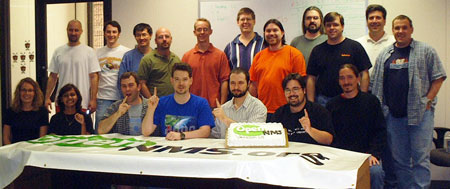
The original Oculan OpenNMS team
Oculan used OpenNMS as the basis for its management application, but added quite a number of additional features and interfaces to make it easier to use. They still worked on OpenNMS as a separate project, as even though the bubble had burst people still needed to manage their networks and there was a lot of interest in an open source project for this.
I entered the picture in 2001. I joined Oculan on September 10th in order to build a services and support business around OpenNMS. The next day the world changed, and it became a lot harder to sell anything, much less this new idea of open source network management.
OpenNMS 0.8 had just been released. In the following months I worked to figure out this whole services business and to get some commercial customers. In 2002 we released OpenNMS 1.0, and I managed to sign up our first four customers (two of which are still customers).
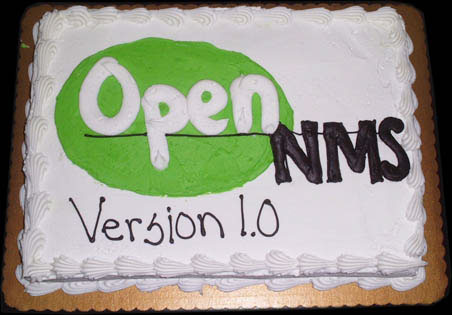
Then in May of 2002 Oculan got new investors who wanted to make two major changes. They wanted to focus solely on the appliance and they didn’t want to open source any software. As copyright holders they are free to publish the code under any license they choose, although once something is published under a license such as the GPL it isn’t possible to “unpublish” it.
I believe I could have stayed at Oculan, but in the months I’d been working on OpenNMS I started to really see its potential. To be honest, when I first took the job I thought, hey, HP OpenView without the cost. But OpenNMS is much, much more than that, and without someone pretty much dedicated to working on it, it would die.
So I made one of the toughest decisions of my life. I went down to Steve’s office and asked for OpenNMS. Oculan would keep the copyright to 1.0, of course, but I would become the project’s maintainer and get the domain names, etc. We worked out the details and suddenly I was much more wedded to open source than I ever thought I would be.
That was the easy part. The hard part was telling my wife.
We live on a horse farm. The previous spring her company, Union Carbide, was purchased by Dow, and rather than move to Michigan she decided to leave, spend the summer working with the horses, and get a job in the fall. After 9/11 it was much harder to find a job, so she was working in a tack shop when I decided to do this. I had literally bet the farm on OpenNMS.
The really crazy part was that I didn’t know Java – at all. Sure, I had programmed before, but not seriously for several years. The guys at Oculan were forbidden to work on OpenNMS, since at that time the code base was so similar that there were IP issues, so I was on my own.
Or so I thought.
I started Sortova Consulting Company (pronounced Sore-toe-va even though it meant Sort Of A), bought The Big Black Book o’ Java, and got to work. Slowly I was able to fix some of the more grievous bugs, and slower still a community starting to gel around the project. I got more customers and was able to make my mortgage payment. The community kept me going when I really had no one else to help me, and even today I am humbled by their involvement.
On the farm I didn’t have access to any real form of broadband Internet access. I used DirecPC satellite, which was iffy in the best of times. Getting something like a T1 to the house was prohibitively expensive, and it was actually cheaper to rent an office downtown with DSL. So that’s what I did.
I decided to dump the satellite to save money (my “spend less than you earn” philosophy had gotten me this far) so I needed a dial-up provider. As one of those folks who buys local when I can, I called up the local ISP, Blast Internet Services. Always looking for new customers, I asked the guy who answered the phone what they used to monitor their network. He didn’t know, and suggested I “Talk to Lyle”.
Lyle Estill is one of the most interesting people I know. He’s one of the few people who can make a decision faster than me. To make a long story short, he liked the idea of open source, and since Blast was services company and Sortova was a services company, why not have two struggling companies struggle together?
So I put Sortova to bed and began working at Blast. It was great to have other people working with me. Business grew and OpenNMS kept getting better. In early 2004 we were able to hire two more people to work on OpenNMS, David Hustace and Matt Brozowski.
David and I have worked together at four different companies. There is no other person I’d rather have by my side in business. Even though he had to take a large pay cut and a great risk to come work on OpenNMS, he did it anyway.
Matt Brozowski has forgotten more about Java than I’ll ever know. He worked at IBM when they licensed Java from Sun, and he also did a lot of programming on NetView, so he understands network management. Matt has five kids, so the decision to come work on OpenNMS was also not an easy one, but he also did it anyway.
The three of us now formed the core team around OpenNMS, but a number of other people in the community had stepped up too. The lists now had a life of their own, and I didn’t feel the need to answer every single question.
In 2004 Lyle left Blast to work on sustainable energy in the form of biodiesel. I am honored to know that his exposure to open source communities has helped shape his own. With Lyle gone the three of us approached Blast to acquire the OpenNMS assets, and on September 1st, 2004, The OpenNMS Group was born.
Shortly after that we started the Order of the Green Polo to give an official form to the community, and together we set off to do great things.
So on this anniversary let me say thanks to everyone who made this possible. You helped write this story, now let’s go make history.
